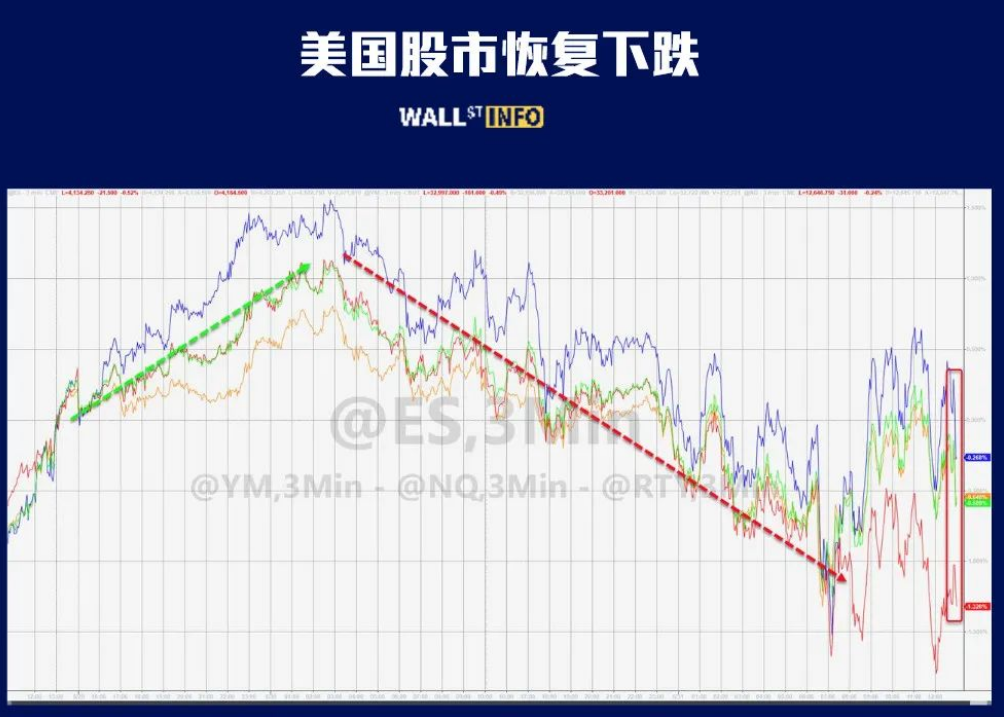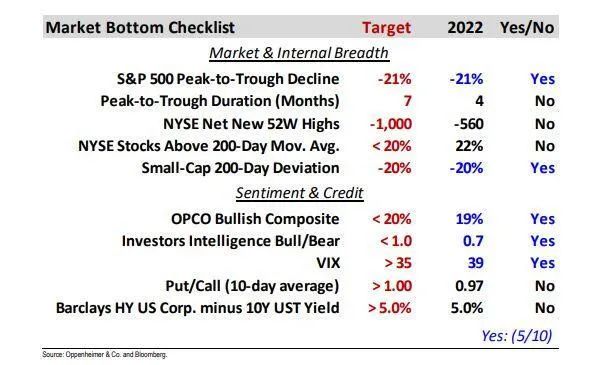Markets are trying to figure out the end of the Fed, and there will be a period of chaos in the process.
One good news: May is over.
The old saying of clearance and departure in May has been brought into full play this year: in May, bond prices fell, gold fell, cryptocurrency fell, the US dollar fell, US stocks once fell into a bear market, and only oil prices soared. On the last trading day in May, US stocks achieved the last turning point-they fell again. As yesterday's article warned, the market may falter a few shots before going out of the real trend.
Apart from this good news, all the rest is bad news.
Yesterday was a very crucial day-the stock market and bond market resumed the synchronous decline mode.
US stock market: Dow Jones index fell 0.67% to 32,991.97 points; The S&P 500 index fell 0.53% to 4136.40 points; The Nasdaq index fell 0.41% to 12,081.39 points
US bond market: US Treasury bonds fell, and the yield of 10-year US bonds climbed 11 basis points (back to a high level) to close at 2.849%, an increase of 3.66%.
The reason why these two markets are listed separately today is that this may become the next trend, or more accurately, Wall Street's attitude towards these two markets-that the stock market rebound will be short-lived, that bond yields will continue to rise-that the stock market low and the bond yield high have not yet appeared.
Michael Wilson, strategist at Morgan Stanley, the highest-profile bear on Wall Street, said that last week's strong trend will only be another bear market rebound in the end. The key fundamentals we are focusing on now are the economic slowdown, and we think the earnings valuation is too high.
Behind the turning point of view on Wall Street is the change of two main trading lines.
The first main line of trading: the return of inflation worries
After the oil price soared to nearly $120, the market's worries about inflation reignited, of course, this was only a fuse. Markets have begun to realize that inflation is self-sustaining, and that controlling inflation is far from as simple as previously thought.
In fact, the biggest problem lies with Biden, who met with Federal Reserve Chairman Powell last night to discuss inflation.
Biden met with Federal Reserve Chairman Powell when the inflation rate hit a 40-year high, which was the third meeting between them. They will be joined by U.S. Treasury Secretary Yellen, who was the last chairman of the Federal Reserve when Powell was chairman.
1. This meeting itself aggravates people's worries about inflation and reminds people of how bad the current situation will be (before the meeting, Biden suggested that he and Powell should agree on solving inflation).
2. Biden's statement disappointed the market, and people were not sure whether he wanted to "fight inflation" or "protect the market".
Biden said that while his top priority is curbing price increases, it is mainly the Fed's responsibility. My plan is to tackle inflation. Let's start with a simple principle: respect the Fed and respect its independence, which I have done before and will continue to do in the future.
Mr Biden wants to prove to voters that he knows something about rising prices, while still insisting that the Fed's independence is unaffected (perhaps to avoid suspicion). Because it is easy to think of the early 1970s, when Nixon pressured then-Federal Reserve Chairman Burns to lower interest rates to stimulate the economy before he ran for re-election, and then inflation got out of control. But to the market, Biden neither showed determination to fight inflation nor injected confidence into investors.
The second main line of trading: the market is uncertain about the path of the Fed to raise interest rates again
Originally, the Fed's path of raising interest rates was very simple: it raised interest rates twice in June and July, suspended interest rate hikes in September to enter the evaluation period, and ended the whole interest rate hike cycle early next year. Once there is a "Fed policy outcome", the market bottom will appear, but this situation has changed again since this week.
On Monday, Fed Governor Waller made a refreshing speech, supporting continuing to raise interest rates by 50 basis points at several meetings. The option of raising interest rates by 50 basis points will not be abandoned until the inflation rate falls close to the target of 2%.
I was wondering why Waller didn't agree with his Fed counterparts, but now I understand-this is a change of views within the Fed, not just his own. Because the day after his speech, Biden met Powell, and the Fed wanted to express its determination to fight inflation (perhaps last week, Atlanta Fed Chairman Bostic's remarks of "suspending interest rate hikes in September" touched Biden's nerves and arranged the meeting with Powell). Now it seems that Biden and Powell's roles were completely reversed in the past. The president cared about inflation, while the Fed chairman cared about the market.
So the Fed's policy may change again (the Fed will redesign slowing economic growth, and the market has been confused about how to price inflation and economic slowdown), and the next few weeks will be the weeks of consensus. The rebound in the market in the past week is due to investors' speculation that the Federal Reserve may suspend interest rate hikes in September. Once the Fed's interest rate hike path changes, the market will also usher in a reshuffle.
The market you understood in the past was too superficial. At present, there are too many worries in the market to form a sharp V-shaped bottom.
$NQmain(NQmain)$ $YMmain(YMmain)$ $ESmain(ESmain)$ $CNmain(CNmain)$ $HSImain(HSImain)$



Comments